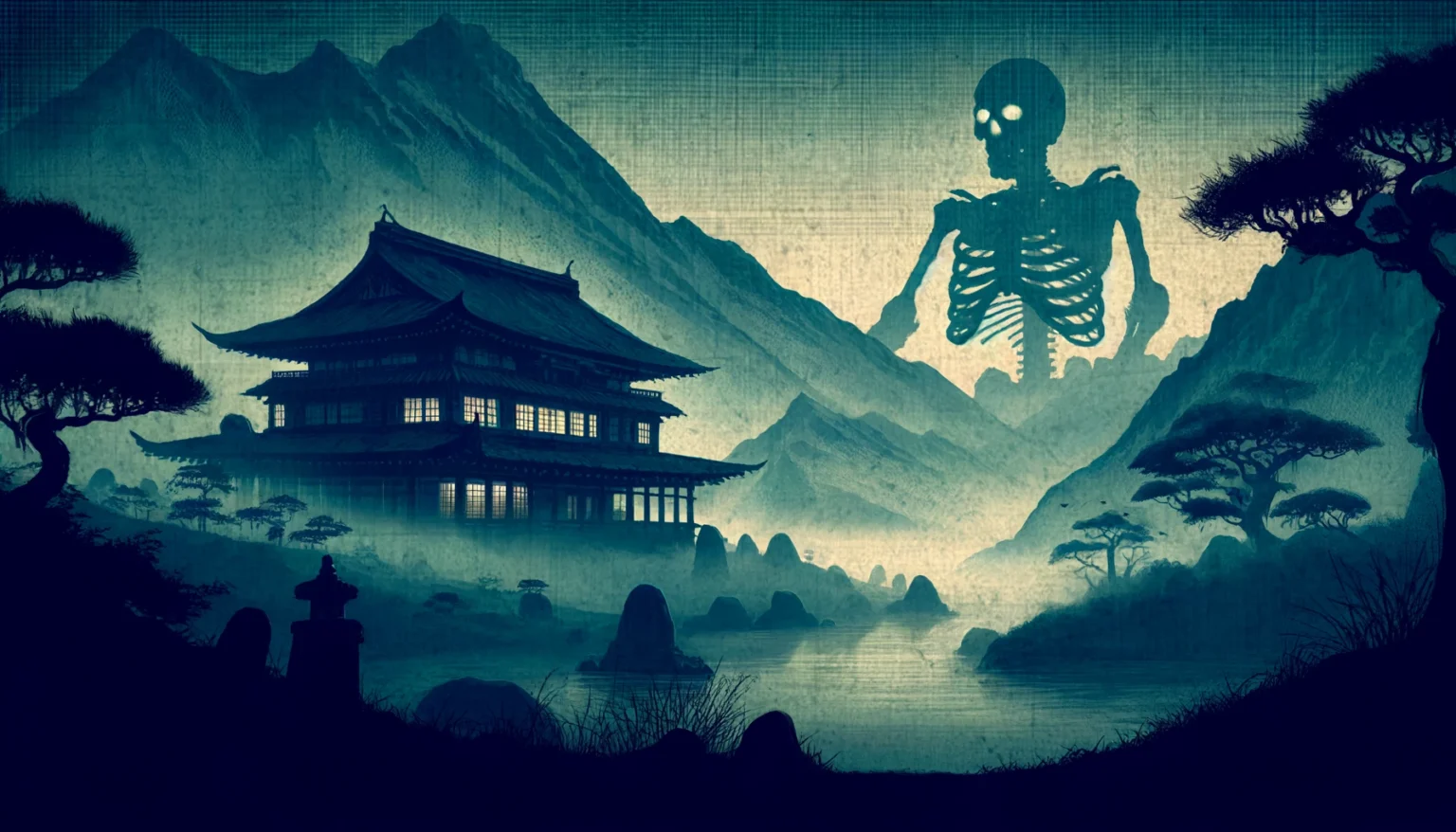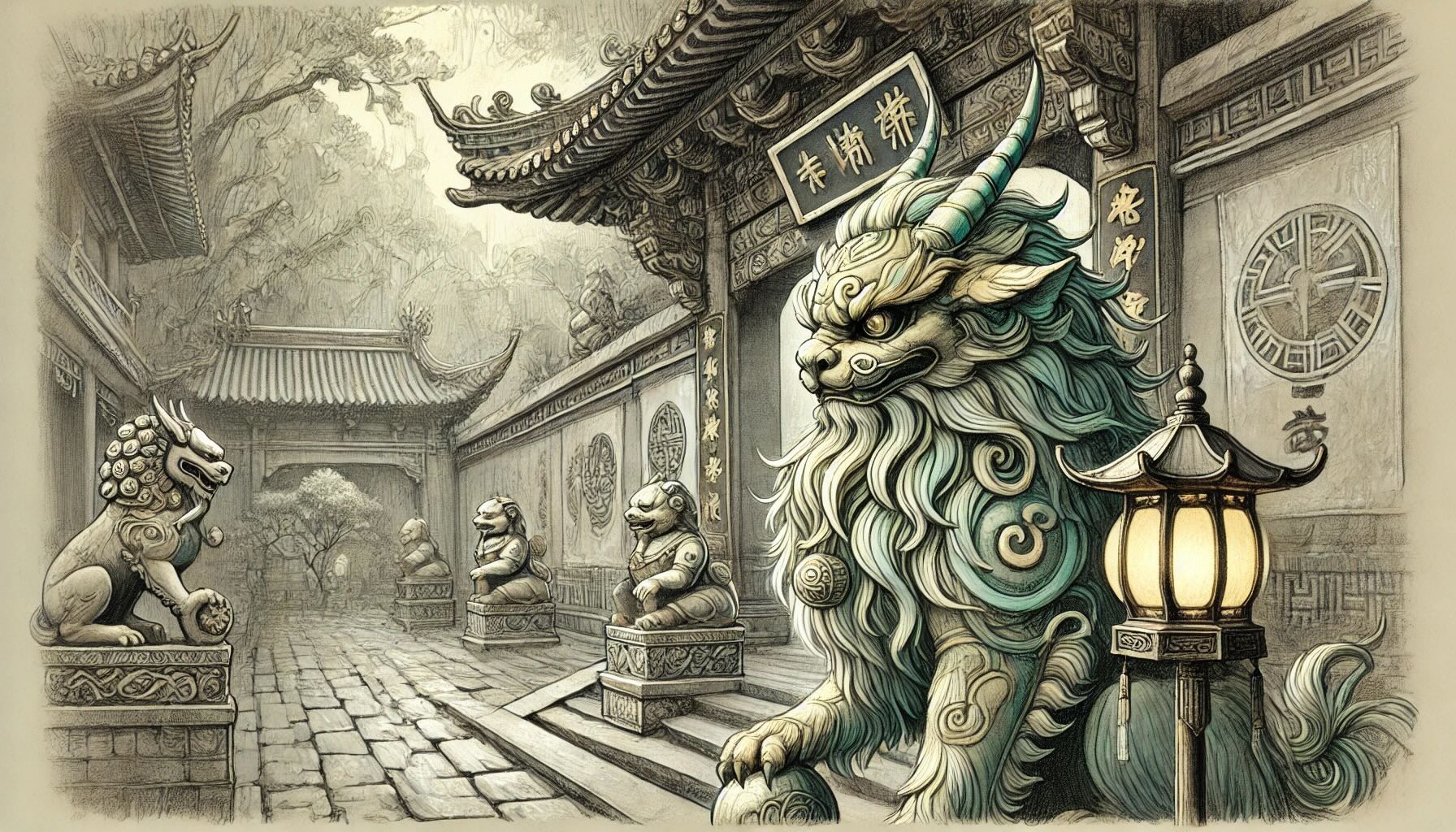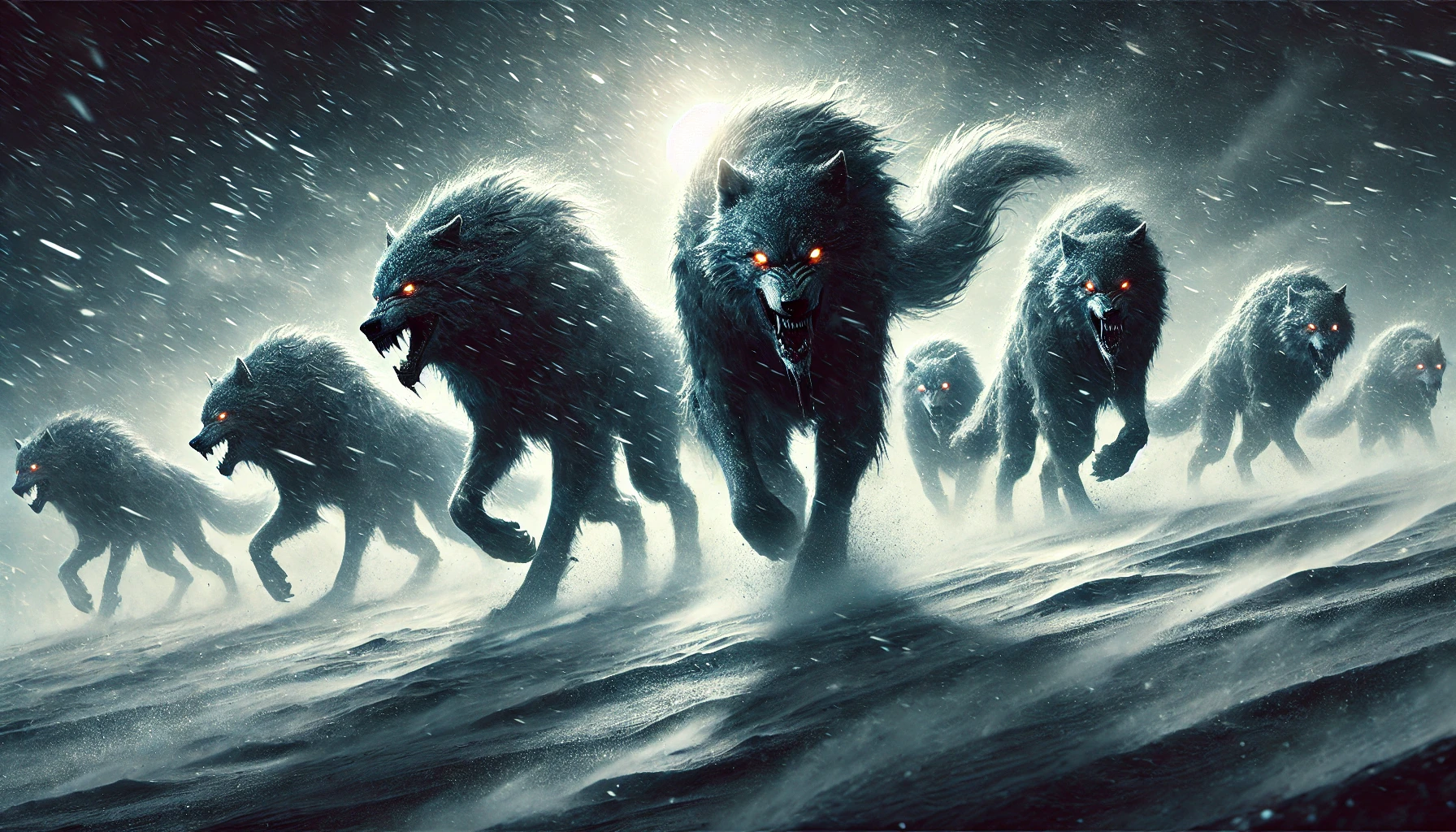The Gashadokuro's Whispered Terror
When the night is still and the moon hangs high over deserted roads, travelers speak of a bone-chilling sound—a faint rattling that grows louder with each step. This is no ordinary noise. It is the Gashadokuro, the colossal skeleton yokai born of despair and starvation. Towering above the tallest trees, its hollow sockets glow faintly, scanning the darkness for its next victim.
No roar, no warning—only the creeping awareness of something enormous closing in. By the time its bones begin to rattle, it is already too late. Most are crushed before they even have the chance to scream.
The Bone-Chilling Anatomy of the Gashadokuro
The Gashadokuro, also known as the “starving skeleton,” looms over the land, as tall as a small mountain. Its skull alone dwarfs ox carts, casting monstrous shadows over moonlit fields. Travelers tell of a cold presence falling upon them, moments before an immense shape blots out the stars. Those unfortunate enough to look up see an empty-eyed maw gaping wide, its teeth like jagged boulders ready to snap shut.
Its grotesque form is assembled from the bones of countless souls who perished from neglect, hunger, or battle. These remains, bound together by unfulfilled rage and sorrow, form an impossibly strong frame.
Its hollow sockets burn with a spectral glow, and its bony jaws clack together in an eternal, silent scream. The air around it reeks of rust and decay, like blood left too long under the sun. Despite its massive size, the Gashadokuro moves with unnerving stealth, shaking the earth only when it chooses. But its hunger is insatiable—a craving for human flesh born of the suffering that birthed it.
A Grim Tale of the Starving Skeleton
Near a war-torn village in northern Japan, the fields were littered with the unburied remains of the dead. Starving villagers had succumbed to famine, their bones left to bleach under the sun. One moonless night, a farmer returning from a neighboring village heard a strange rattling behind him. He quickened his pace, but the sound grew louder.
Suddenly, a shadow fell over him—impossibly large, stretching far beyond the trees. He turned to see the Gashadokuro, its hollow eyes glowing faintly in the darkness. Before he could scream, the yokai’s bony fingers closed around him. His cries echoed through the night, but no one dared to leave their homes.
In the morning, only his sandals remained, crushed and surrounded by enormous footprints that vanished into the mountains.
The Origins of the Gashadokuro
The Gashadokuro is not born of nature but of human neglect. It arises where bones lie forgotten, where tragedies have left the dead unburied—battlefields, famine-stricken villages, or plague-ravaged towns. During the Sengoku period, famine-stricken regions of northern Japan saw countless bodies left to rot, their pain coalescing into what would become the Gashadokuro.
It is said these yokai are strongest during the "hour of the ox," when the veil between the living and the dead is at its thinnest. Elders warn that those who wander alone during this time may hear the whispers of the forgotten, urging them to stray from the path. Many believe that the Gashadokuro roams freely in this hour, feeding on those who ignore the signs and tempt fate by lingering too long in desolate places.
By day, they retreat into the earth or remain motionless, blending with the ruins and forgotten graves until nightfall summons them once more.
Behavior and Abilities
The Gashadokuro is a master of stealth and brute force. Despite its immense size, it stalks its prey silently, striking without warning. It crushes its victims in skeletal hands or bites their heads off with its massive jaws.
It is believed that the Gashadokuro can sense those who fear it most. Travelers tell stories of those who trembled in its presence only to be snatched moments later, as if their terror called the yokai to them. The creature is drawn to those who are alone, especially wanderers venturing too close to its haunting grounds. Its hunting patterns are unpredictable, but survivors claim it often spares the guilty, choosing instead to prey on the fearful and innocent.
By dawn, its spiritual energy fades, leaving behind enormous footprints filled with stagnant water. Villagers who come across these eerie impressions often refuse to step inside them, whispering that those who do invite misfortune. Some claim the prints never dry, as if the earth itself remembers the creature's passing, while others leave small offerings at their edges, hoping to appease the restless spirits bound within.
Signs, Omens, and Warding Rituals
Elders and hunters alike warn of telltale signs that reveal the Gashadokuro’s presence:
- A Bone-Deep Chill: The air turns icy cold, freezing even warm breath into mist.
- Rattling Bones: A faint, rhythmic clattering in the distance—a warning you cannot outrun. Some villagers scatter salt at their doors, believing it will confuse the yokai and force it to wander elsewhere.
- The Scent of Decay: The stench of rusted blood and death clings to the air.
- Silent Forests: Birds and wildlife flee, leaving an eerie, unnatural silence.
- Shadowed Footsteps: Enormous, human-like prints that appear without warning, sometimes leading nowhere. Villagers say those who step inside them may feel a sudden chill, as if unseen hands are grasping at their legs. Some believe these footprints never fully fade, lingering as a reminder of the yokai’s passing.
A Final Word of Caution and Protection
The Gashadokuro does not distinguish between guilt and innocence when hunger takes hold. Every unburied skeleton whispers its pain into the soil, waiting for the moment it can rise. When it does, the giant skeleton will walk again, hungrier and more relentless than ever.
If you find yourself under the moonlight and hear the faint rattle of bones, remember: your only hope is to avoid its gaze entirely. And if you come across a field of unburied remains, tread carefully—for their silent cries may already be summoning the yokai from its restless slumber.



